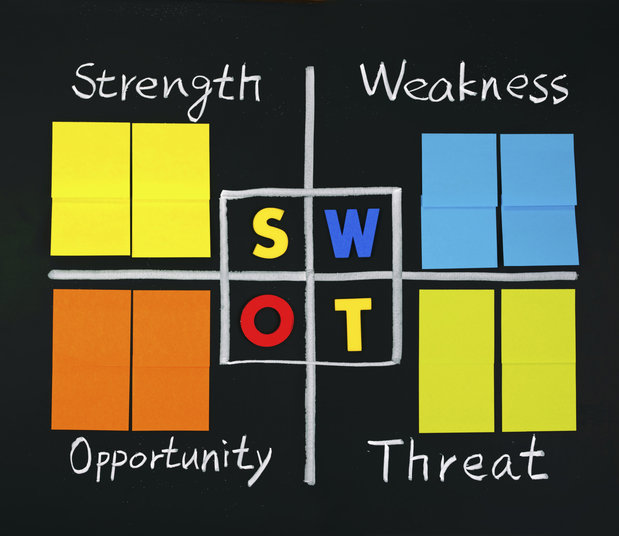One crucial exercise for a healthy business
- January 29, 2016
- Posted by: Normand Brien
- Category: Uncategorized

In a volatile market, here’s an effective way to make your organization stand out among your competitors and your customers.
Is your business going in the right direction? Is your business dealing with internal conflict or chaos given the market conditions? Most industry sectors such as energy and healthcare have seen near double-digit percentage declines in recent months. With commodities falling back, 401(k) pensions losing value and businesses rethinking strategies to stay solvent, everyone, whether personally or in business, is impacted by the global strain.
Going by the financial headlines in The Wall Street Journal, Forbes and Fortune, the outlook is negative, suggesting another recession. Some say panicking is the worst thing to do; best to wait it out. However, the growing sentiment among millions of investors is to prepare for steeper losses.

However, this article is not about how to maneuver in the stock market. It is about what each organization should do to prepare and adjust to the volatility underway. Positioning an enterprise toward results and success is my focus.
Many organizations, such as technology firms, that have been in this industry for years have the capacity and vision to adjust to financial downturns — meaning strategic plans and budgets are modified periodically. Depending on their customer base or their global reach, businesses have to assure investors that they can meet market and consumer expectations.
An example: Twitter’s hold as a major player in social media has weakened. With declining profits and no dividends issued in more than a year, a recent senior-level staff shakeup, and suggestions of implementing new features in its products, reality is sinking in fast. Unless the Twitter leadership team devises a new campaign and fixes the internal chaos, the company will lose the influence it once had. To stop the spiral downward, Oliver Blanchard in this recent article suggests a course of action that Twitter should act on today. It is just mortifying that all of this comes down to leaders who don’t understand the the mechanics of running a business.

How do you maintain overall stability in the local or global marketplace? What is the framework to build strategies, scorecards or long-range budgets? How well does your organization adapt to change?
My last article spoke to how the IT department should institute quality controls and disciplines to achieve a higher standard of efficiency. It is no different at the C-suite table. Boardrooms frequently look at the bottom line and strategies in motion, and then make the assessment of whether goals are being met. It is a recurring process where business leaders look inward to build on strengths and address the weaknesses, while looking outward to investigate new opportunities and confront the threats.
Conducting effective planning routinely includes an operational budget and a scorecard that aligns with the long-term business plan. With this data in hand, leadership should also have a documented analysis of the business strengths, weaknesses, opportunities and threats that govern how well the company is functioning.
This analysis, known as SWOT, is challenging and time-consuming, requiring involvement from all levels of the organization. Some analysts or consultants may suggest an annual checkup, but typically, this assessment can either be completed at the end of a fiscal year or when the business is not hitting its targets and budgets. The latter makes more sense, but business leaders must often refer to it.

So how do you build and implement a framework? You could use your preferred search engine and look up what a SWOT is or how to do it, or you could borrow samples from your peers. Some service websites suggest using their consulting solutions to get the analysis off the ground. Any way you approach it, you still need internal leadership and competencies to recognize how the organization is functioning and show stamina for the future.
There are many techniques for listing out your thoughts, but it’s best to just keep it simple: concise, meaningful bullet points where you can itemize and prioritize each factor, while determining whether each has a major or minor impact on the business. To analyze all of these characteristics of a SWOT involves all business units using each department for the exercise so that the results become accumulated into one corporate view.
Strengths are the concrete or elusive tasks performed internally that have a positive impact on the business, notably within your control. Ask questions such as:
- What are your successes or what do you do well?
- Look at staffing — what skill sets, credentials and knowledge are there?
- What makes you better than your competition?
- What other positive aspects add value?
Weaknesses are the negative factors that detract from the value you offer to your customers and are the concrete or elusive tasks performed internally that have a negative impact on the business, notably within your control. Ask questions such as:
- What areas need improvement to accomplish your objectives?
- What deficiencies exist within your business?
- Does your business have limited resources?
Opportunities are normally external factors that exemplify why your business will thrive. There are occasions when you would look internally to increase the value of staff, products or services. Discuss the probability of implementing and ask questions such as:
- What opportunities exist in your industry that you can benefit from?
- Is the perception of your business positive?
- Is the opportunity ongoing, or is there just a window for it? In other words, how critical is your timing?
Threats are also normally external factors with potential to place your entire business at risk. Most businesses may see this as the competition, but other threats can include price increases by suppliers, increased government regulation, economic downturns, negative press coverage, and shifts in consumer behavior or obsolete technology. Ask questions such as:
- Are there swings in consumer behavior, the economy or government regulations that could reduce your financial position or influence services you provide?
- Who are your existing or potential competitors?
- What factors beyond your control could place your business at risk?
- Has there been a significant change in supplier prices or the availability of raw materials?
When you establish specific values related to your business within the four categories of SWOT analysis, adjust your strategic plan based on the information you have accumulated. With acknowledgement of your inherent strengths, leverage them to pursue the opportunities suitable to your organization, effectively reducing potential vulnerability related to threats. Likewise, by identifying your organization’s weaknesses with regard to external threats, devise a plan that enables you to eliminate or minimize them while improving defensive strategies.

When hiring staff to perform a key function, you seek out achievers that have demonstrated successes. That experience should guide your decision to hire the best. When sitting at the top, the leaders are expected to recognize current events and issues, providing the expertise to execute a strategy.
The documents and practices outlined above (long-term strategy, scorecard/budget and the SWOT analysis) keep the organization attentive toward value add and results, basing decisions on accurate and relevant data. In turbulent times, measures and metrics can be leading indicators of progress and enable improvements, ensuring customer satisfaction and a healthier stance for your business.
You can read more about Norm Brien at his LinkedIn page.
